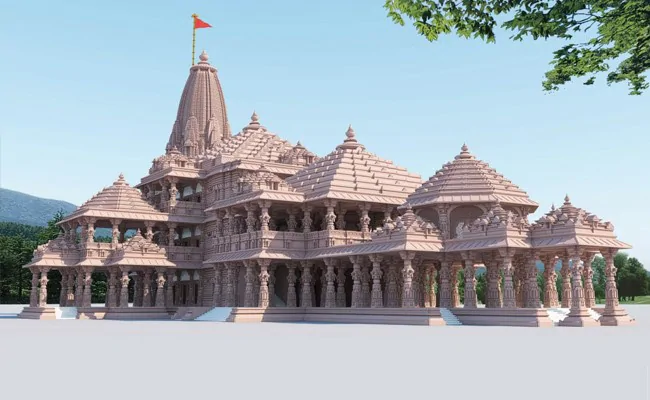Introduction
The Ram Mandir in Ayodhya stands as a symbol of faith, history, and spirituality in the heart of India. Revered in Hinduism, this temple is dedicated to Lord Ram, a central figure in Indian culture and the hero of the epic Ramayana. This article delves into the rich tapestry of the temple’s past, its architectural grandeur, and its profound spiritual significance.
The Mythological Background
- Lord Ram and the Ramayana: Lord Ram, an avatar of the Hindu god Vishnu, is the protagonist of the Ramayana, an ancient Indian epic. His life’s journey, from his birth in Ayodhya to his triumphant return after exile, is deeply interwoven with the ethos of Hindu philosophy and morality.
- Ayodhya in Hindu Scriptures: Ayodhya, the birthplace of Lord Ram, is described in various Hindu scriptures as a city of immense importance. Its significance transcends mere geography, representing a spiritual ideal.
Historical Evolution of the Temple
- Ancient Origins: The history of the Ram Mandir is shrouded in antiquity, with references found in various historical and religious texts.
- Construction and Reconstruction: Over the centuries, the temple has seen phases of construction, destruction, and reconstruction, each phase echoing a period in India’s diverse history.
- The Modern Temple: The current iteration of the Ram Mandir is a result of years of national discussion and judicial processes, culminating in a groundbreaking ceremony in 2020.
Architectural Splendor
- Design and Structure: The temple’s architecture is a marvel, reflecting traditional Hindu styles fused with modern techniques. Key features include intricate carvings, towering spires, and a grand central dome.
- Artistic Elements: The temple also serves as a canvas for artisans and craftsmen, showcasing a rich tapestry of art that tells the story of Lord Ram and other deities.
Spiritual Significance
- A Pilgrimage Site: For millions of Hindus worldwide, the Ram Mandir is not just a physical structure but a pilgrimage destination, embodying their faith and cultural identity.
- Religious Practices and Rituals: The temple is a hub for various religious practices and rituals, with special significance during festivals like Diwali and Ram Navami.
Conclusion
The Ram Mandir in Ayodhya is more than just a temple; it is a testament to the enduring power of faith and tradition in India’s cultural landscape. Its historical depth, architectural beauty, and spiritual aura make it a must-visit destination for anyone seeking to understand the rich tapestry of Indian culture and Hinduism.
For those planning to visit, it is advisable to explore official tourism websites and travel guides for detailed information and travel arrangements. The journey to Ayodhya and the Ram Mandir promises to be as enriching as it is enlightening, offering a glimpse into the heart of India’s spiritual heritage.




